Garden spurge: types, care and reproduction
Garden euphorbia, due to its original appearance, is loved by many plants and landscape designers. This plant is bush-shaped. A lot of pagons grow from the ground, the height of which is about 50 centimeters. Many thin leaves are placed on the pagons. This plant blooms in yellow, and the buds are spherical.
Content:
Types of milkweed
Garden spurge is a fairly original plant with which you can decorate any landscape design... In addition, this plant has a large number of species. The main ones include:
Bordered spurge:
- It is an annual plant that is characterized by unpretentiousness to soil and weather conditions.
- This plant has teardrop-shaped leaves with a border, as well as lacy bracts, which gives it originality and consistency.
- The flowers of this plant have very original shape and white color.
Variegated spurge:
- It is an annual plant that is characterized by unpretentiousness to soil and weather conditions.
- This plant is characterized by the red color of the bracts and adjacent leaves, which gives the bush an extraordinary beauty.
Cypress spurge:
- Belongs to the category of perennial plants, the stem height of which can reach 50 centimeters.
- All the stems of this bush are covered with thin leaves that resemble needles in their appearance.
- The inflorescences of this plant are characterized by a very pleasant aroma.
- Cypress milkweed flowers are very small and are yellow, red or beige in color.
Almond spurge:
- It is a perennial plant that is characterized by unpretentiousness to soil and weather conditions.
- It is characterized by the presence of thin, lanceolate leaves and scaly shoots.
- On the rosette, there are about ten axillary peduncles, the flowers on which, when blooming, have a yellow-green wrapper.
Multi-colored spurge:
- They belong to the category of perennial plants, which is characterized by a variety of colors.
- This plant is quite original, as it has leaves of various shapes along the entire length of the stem.
- The bract leaves are yellow in color.
- During flowering, they turn orange, and milkweed flowers are yellow.
Mediterranean spurge:
- It has a high level of popularity among gardeners, as it is characterized by a rather original appearance.
- The height of the plant can be about one and a half meters.
- The leaves of this bush are green and oblong.
- The shrub, during and after flowering, has a bluish tint, which makes it unusual.
There is still many types of garden milkweed... This allows gardeners to choose the most optimal option for decorating landscape design.
Plant care
This plant is not very demanding to care for .:
- It tolerates a lack of moisture well enough, so the gardener does not need to water frequently.
- Water garden spurge necessary during periods of very severe drought. This action is performed either in the early morning or late in the evening, before sunset.
- Also, this plant is characterized by an increased level of resistance to low temperatures. For the winter, it is necessary to insulate only young seedlings of the bush. For this, mainly leaves are used.
- This plant can put up with all the negative factors, except for the lack of light.
Therefore, it is necessary to choose a sufficiently illuminated area so that direct sunlight constantly falls on it. This will contribute to the full growth and development of milkweed. Otherwise, this plant may develop very poorly, not achieve its normal growth, and it may also lack flowering.
Euphorbia does not tolerate loose soil, as well as neighborhood in the form of weeds.
Therefore, it is necessary to carry out weeding this plant regularlythat will not only destroy weeds, but also constantly loosen the soil, which will allow the milkweed root system to constantly breathe and fully develop. Also, this plant requires mulching three times a day, for which humus is used. This action must be performed in spring, autumn and summer. For the rapid and full growth of this plant, it is necessary to feed it with special fertilizers. This action is performed twice a year.
Garden spurge cannot fully exist without timely pruning.
It must be produced immediately after the sprouts and buds have dried. This will not only preserve the attractive appearance of the plant, but also preserve its health and vitality. Be very careful when pruning, as this poisonous plant can irritate the skin.
Plant propagation
There are two types of reproduction of this plant. The first of these is the planting of seeds. During this procedure, it is necessary, first of all, to stratify the seeds. To do this, you need to take pieces of sandpaper and grind all the seeds with it. This will break the hard shell of the seeds and help them germinate much faster. Seeds must be planted in light soil and refrigerated for two weeks. Depth of disembarkation should not exceed 0.5 centimeters. Next, the seeds must be placed in a ventilated room, the air temperature of which is 20-22 degrees. Seed shoots must be expected in about a week.
Planting seeds in a flower garden should be done somewhere in the middle of May, since the plant is quite thermophilic.
The second method of breeding garden milkweed includes the division of the bush:
- This procedure is carried out in early spring, at the first signs of bud germination.
- You can also propagate euphorbia in this way in the fall. This will allow the plant to root very well.
- After disembarking the milkweed, it is strictly forbidden to disturb it.
- In order to get a healthy and full-fledged garden milkweed bush during reproduction, it is necessary to prepare the appropriate conditions for it.
- This plant is very fond of light, so it is necessary for it to choose a place with good lighting.
- Also, garden spurge can withstand partial shade with dignity, but the plant will not be able to bloom fully in such conditions.
It is best to choose medium, loose loam as the soil for this plant. At the same time, the soil should not be redundant fertilizers... If the soil is acidic, then lime must be added to it. Euphorbia does not tolerate an excess of moisture, so it needs to choose a dry area on a hill. This will ensure a timely decrease in water.
You need to plant the plant not very deep into the ground.
The distance between the bushes should be at least thirty centimeters. Do not forget that the garden spurge does not like very frequent transplants. Therefore, when choosing a place for it, you must remember that you are doing it for a fairly long time.
Plant diseases
Despite the fact that this plant is poisonous, it is very often various pests attack... Most often on the garden milkweed, you can find worms and nematodes. The reason for their appearance is the use of low-quality planting material. To combat these pests, it is necessary to use nematicides, as well as insecticides. With the help of these preparations, a plant bush is processed, which leads to the death of parasites.
Also, garden spurge very often suffers diseases such as fusarium, ring spot and root rot.
Fusarium is a disease that enters the plant through the soil:
- When infected with this disease in garden milkweed, not only the roots, but also the stems can be affected.
- This disease affects the vascular system of the plant.
- It is characterized by a very rapid wilting of the bush.
- Also, euphorbia blooms very poorly with this disease and leaves fall off.
- At the first signs of this disease, the plant must be treated with special preparations.
Root rot appears with excessive soil moisture:
- It is almost impossible to cure this disease by any means, therefore it would be best to carry out its timely prevention.
- If the garden spurge has already been affected by this disease, then its tuber will need to be dug up along with a lump of earth and thrown away.
Ring spot is characterized by the appearance of yellow spots in the form of rings:
- This disease spreads at elevated air temperatures and very high humidity.
- Subsequently, this disease, the leaf of the plant shrivels and disappears.
- At the first appearance of the disease, it is urgent to remove all affected leaves and shoots.
Garden spurge, although it is an unpretentious plant, but it still requires care... Correct and high-quality care will protect the plant from a variety of diseases. In addition, as a result of proper care, you can get a very beautiful plant that will decorate your garden plot with dignity.
More information can be found in the video.



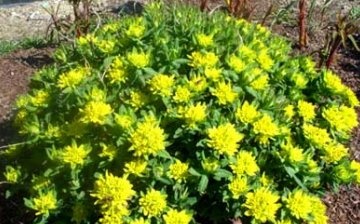
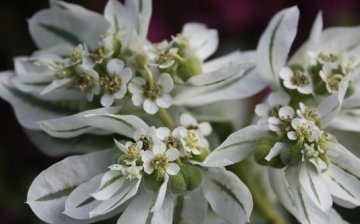
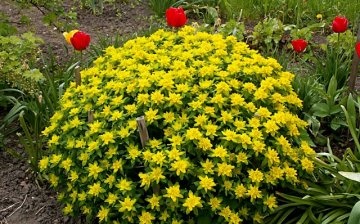
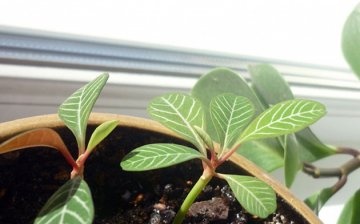
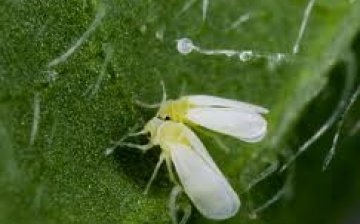





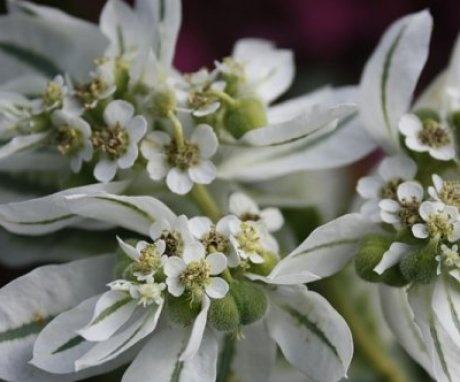
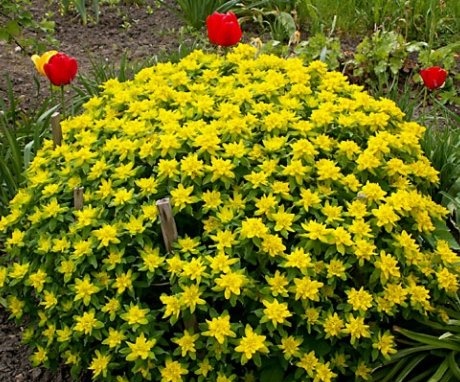
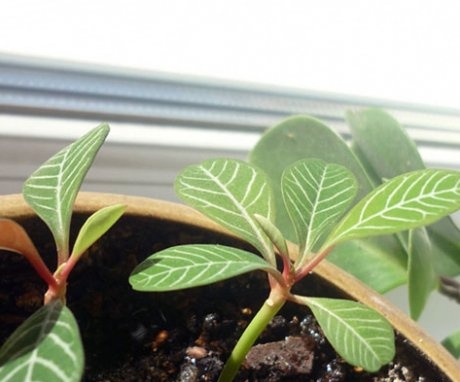
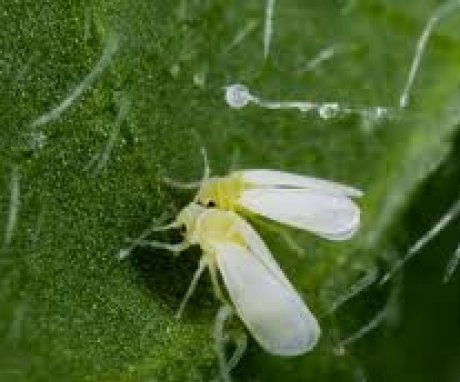
Hello! I can’t find the answer to my question: is it possible to cut the "white-veined" spurge without harm to it? The fact is that my pretty plant stretched out and somehow bent ugly :( Hands are itching to cut it short, but I don't know, is it possible?
Thanks in advance for your qualified answer!